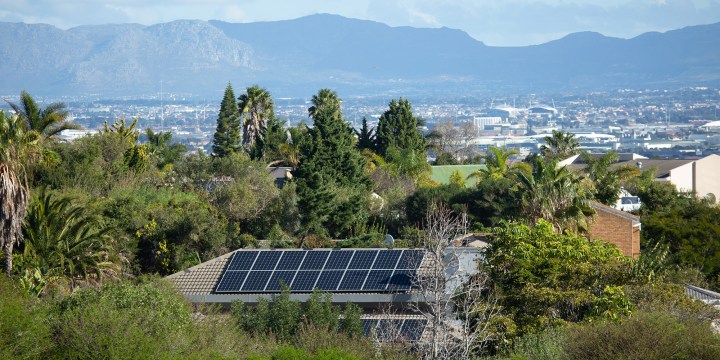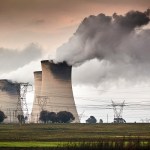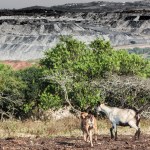POWER CRISIS
How Western Cape can go 100% renewable and solve rolling blackouts – energy analyst

Is it possible that building more solar, wind and battery storage than necessary will not only provide the Western Cape with 100% reliable energy generation, but the surplus could be sold to the rest of the country, solving the problem of load shedding?
“Do you think the rest of South Africa would be keen to get a load of 15 terawatt-hours of superpower emanating from the Western Cape – yes or no?”
This was the question posed by energy analyst Clyde Mallinson while speaking at one of the Overberg Geology Group’s green energy sessions earlier this month, where he presented his solution to load shedding.
Mallinson proposes that building more solar PV and wind power generation capacity than necessary will not only provide the Western Cape with 100% reliable energy generation, but the surplus could be sold to the rest of the country, solving the problem of load shedding.
Mallinson’s model
The chart above, designed by Mallinson, illustrates that South Africa could generate all the electricity it needs with a combination of wind, solar and storage.
Storage includes battery energy storage, pumped storage, underground pump storage, gravity storage and vanadium flow batteries.
But to meet all the country’s needs, huge amounts of batteries to store the power generated by wind and solar are needed to be able to give reliable power when the wind isn’t blowing and the sun isn’t shining, or to carry surpluses from summer into winter (otherwise known as intermittency).
Mallinson said this is possible, but building that amount of battery storage would be very expensive.
He says the solution is to build more wind and solar power than what is actually needed, which would reduce the size of the batteries required.
“The sweet spot [on the U-curve] is where we can get a 100% secure system with the lowest potential capital cost,” said Mallinson.
“Now, the interesting thing about that sweet spot – the lowest cost combination of wind PV and storage – is that it’s designed to carry us through the very worst patch in winter. And, therefore, on every other day of the year, we’re going to have excesses or surpluses.”
Simply put, there would be a significant excess of wind and solar PV and thus a significant surplus of energy produced.
Mallinson also designed a U-curve specifically for the Western Cape, which has an annual energy consumption of about 20 terawatt-hours, showing that the “sweet spot” for the Western Cape is where we produce an excess of 70-75% surplus power.
Chris Yelland, electrical engineer and energy analyst, said Mallinson’s basic premise and modelling makes sense, but that it needs to be balanced against the practicality and timing of it.
“So, for example, the whole world right now is turning to renewable energy, and the price of gas and coal and diesel goes through the roof,” Yelland told Our Burning Planet.
“And in a world that is rapidly scaling up because of the supply constraints, and because of the fossil fuel issues in Europe and around the world, we are not the first in the queue.”
Which means SA might struggle to get hold of materials like solar panels, inverters, wind turbines and gearboxes. There are other practical issues with implementation – such as importing (our ports aren’t in good shape), labour and construction.
“While the theory is good and promising, you’ve got to be cautious,” said Yelland.
Visit Daily Maverick’s home page for more news, analysis and investigations
How load shedding is solved
To provide the Western Cape with reliable power and create a surplus, Mallinson projects that the province would need to build 7.5GW of solar PV, 4.5GW of wind and 3.2GW of storage to provide 5.7 hours of storage, which he says would give the Western Cape 100% reliable power 24/7 and create about 75% surplus energy.
“The storage is necessary to ensure that capacity requirement in instances like… low wind at night,” explained Mallinson.
In Mallinson’s model, the amount of wind and solar built would produce about 34TWh, which is more than the 20TWh demand of the province, leaving an additional 14TWh in surplus (roughly 75%).
This would cost $14.6-billion, about R250-billion at today’s costs.
“A bit of overkill on wind and solar, specifically done so that there’s absolutely zero load shedding,” explained Mallinson, as the surplus sold to the rest of the country could prevent load shedding.
There would be 18,000 megawatt-hours of storage, making the cost of electricity more or less 95c a kilowatt hour.
With the surplus, the full cost of electricity would be R1.67 if the surplus wasn’t sold – because curtailing that superpower of 14.7 terawatt-hours would increase the price of electricity.
But this is where Mallinson says the national problem of load shedding gets resolved.
“The rest of South Africa is predicted by Eskom to be short by 15 terawatt-hours in 2025,” said Mallinson, so with the Western Cape producing an additional 14 terawatt-hours of power as surplus, it could be sold to the rest of the country and prevent load shedding.
Slide the bar across to see the current situation (generous consideration, as the coal fleet is performing slightly worse) and what it would look like if we added renewables and battery storage to the grid. See how load shedding (white) disappears.
A similar theory in Australia
Thread: Each week I’m running a simulation of Australia’s main electricity grid using rescaled generation data to show that it can get very close to 100% renewable electricity with just 5 hrs of storage (24 GW / 120 GWh)
Results:
last week: 100% RE
last 65 weeks: 99.0% RE (1/5) pic.twitter.com/7iiNUefltU— David Osmond (@DavidOsmond8) November 23, 2022
Interestingly, David Osmond, a wind engineer at Windlab in Australia, has designed a model which looks similar to Mallinson’s.
Every week, Osmond has been running a simulation for Australia’s main electricity grid using rescaled generation data to show that it can get very close to 100% renewable electricity with just five hours of storage (Mallinson’s model uses 5.7 hours of storage).
“So, the Western Cape, by making itself 100% green, will not only be helping itself, it will actually be throwing a lifeline to the rest of the country,” said Mallinson.
What does the Western Cape think?
Mallinson suggested that the Western Cape “take the lead” because the creditworthiness of its municipalities would allow them to underpin power purchase agreements, thus making itself resilient with regard to electricity.
“And there probably also wouldn’t be grid evacuation constraints because it would be feeding into itself, as it were, and you’d be using the evacuation capacity to send that surplus back to Gauteng or wherever else.”
While Mallinson said this entire quantum doesn’t necessarily need to be built in the Western Cape – some could be built in the Northern Cape, for example – the Western Cape does have enough renewable resources to generate a reliable supply of energy.
The Council for Scientific and Industrial Research (CSIR) published a study in 2016 that showed South Africa’s solar PV and wind resources are globally competitive, and that over 80% of the country, including the Western Cape, has enough wind potential to achieve a 30% average annual load factor, which is globally high.
For example, the study reports that “in countries like Spain and Germany, which are known for their good wind resources, actual average load factors of the entire wind fleets are 25%-27% and 20%-23%, respectively”.
Beverley van Reenen, Mayco Member for Energy in the City of Cape Town, told Our Burning Planet that the City is working with the CSIR to develop viable electricity pathways that are primarily based on renewable energy resources, but include other dispatchable technologies for flexibility.
Van Reenen said the proposal for the province to go 100% renewable is their “ultimate goal of our climate change commitments”. However, they’d need to consider other restrictions such as grid capacity, cost and availability of batteries given the global demand, land availability and government mandate.
Additionally, the initial pathways they are looking at with the CSIR haven’t suggested that electricity independence would be cost optimal for the City by theoretically matching supply mix options and demand.
“The real-life electricity system is complex, highly integrated and centrally planned under the Electricity Regulation Act,” said Van Reenen, adding that, like other municipalities, they are aiming to help end load shedding over time and reduce its carbon footprint by making a contribution to a more reliable, cleaner national power system enabled by the recent amendments to the act.
Van Reenen says that currently provincial governments do not have a mandate to generate, transmit or distribute electricity. However, she said the City works closely with the Western Cape government and “sees opportunities for the Western Cape municipalities, supported by the provincial government, to collectively consider procurement mechanisms for bulk electricity from IPPs, identifying financing mechanisms for grid strengthening and data-enablement as well as advocating for opening up the energy market to make it easier for municipalities and generators to engage directly.” DM/OBP






















Do these analysts comprehend the scale of battery system they envisage?
Anyway, councils are now used to milking consumers as margin on electricity generates almost all the operating profit. We could get our energy from fairy farts and it will make not one penny difference to what energy users pay in Western Cape.
The rational response is for energy users to do their own because that will be faster, more probable, more reliable and cheaper than council. Own solar, wind if you have the right location, enormous batteries. We anyway have generators for loadshredding so no need to superscale the wind solar and batteries. The problem? Councils will make it very difficult to do this.
There will be a court case to determine once and for all that, especially like with electricity where the state is NOT providing, that the state cannot prevent citizens from doing their own energy – and even supplying their neighbors. We do it for health, education, security – why is electricity different (if done safely).
Good afternoon- Tony Seba in the US has performed a similar set of studies for a 100% renewable plan.
Also the town of Wildpolsried in Germany has implemented a plan where they export to the rest of Germany as proposed here.
PS please stop referring to load shedding as rolling blackouts. This is factually incorrect and sloppy reporting.